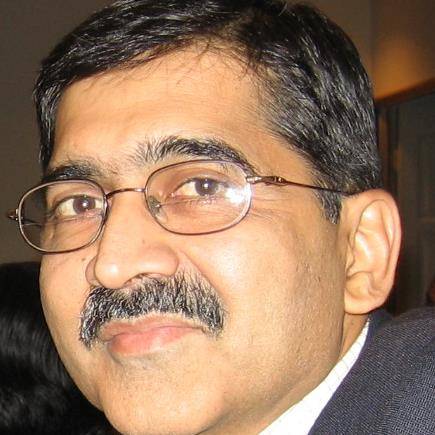Extreme Heat in Cities: From Assessment to Action
Extreme Heat, heat risk, heat action plans, heat early warning systems, heat assessment As heat waves become more frequent and intense – by 2050, more than 4 billion people are expected to experience many hours per year of heat stress that surpasses human tolerance – cities around the world are stepping up action on heat resilience, developing successful early warning and mitigation programming, and implementing a growing range of methodologies for heat monitoring. Heat stress is associated with a range of negative outcomes, increasing health risks, crime, violence, heightened levels of energy consumption, and reducing economic productivity and educational attainment. These negative outcomes place a disproportionate burden on already excluded groups of urban residents, such as low-income people, the elderly, and those with chronic illnesses or disabilities. In the interests of urban livability, economic productivity, inclusion, and sustainability, it is essential for cities to take action to mitigate and adapt to excessive urban heat. There is a strategic need to share knowledge and build a better-connected community of practice on the extreme heat preparedness and mitigation agenda. This session shared experiential knowledge about extreme heat risks and impacts, advances in measuring and modeling extreme heat, and lessons learned from the implementation of heat mitigation policies and investments – guidance for cities getting started on heat resilience from the perspectives of cities who are already on their way. Ross Eisenberg (GFDRR, World Bank), set the context for the session, introducing how the morphology of cities, which includes their physical form, structure, and layout, significantly impacts urban heat dynamics. This relationship is a key component of the Urban Heat Island (UHI) effect, where urban areas experience higher temperatures than their rural surroundings. To showcase the growing body of knowledge on this topic, Ross also introduced the World Bank’s 2023 publication “Unlivable: What the Urban Heat Island Effect Means for East Asia’s Cities” – which provides an in-depth analysis of the increasing threat of extreme heat and its implications for human health, economies, and urban development, especially in vulnerable parts of Asia. Dr. Dileep Mavalankar (Indian Institute of Public Health / GFDRR, World Bank) shared the history and experience of the Ahmedabad Heat Action Plan – a comprehensive framework aimed at preparing and protecting Ahmedabad’s residents from extreme heat events. This plan, which was borne out of the city’s 2010 heatwave, in which 76 people died from heat stroke, and more than 800 people died of heat wave associated mortality, was one of the first comprehensive heat action plans in South Asia. Dr. Mavalankar talked the audience through the various components of the plan, from the early warning system and interagency coordination mechanisms to the public awareness and community outreach campaigns. He also spoke about health care capacity building activities such as refresher training for health care professionals and measures to enhance the capacity of health care facilities to respond to heat emergencies. Finally, he spoke to the adaptive measures promoted by the city, such as the availability of shaded areas and public water facilities to help residents stay cool and hydrated, and the use of reflective and white-painted roofs to reduce indoor temperatures. The Ahmedabad Heat Action Plan has been credited with reducing heat-related deaths and illnesses significantly since its implementation – on average an estimated 1200 deaths are prevented each summer since its implementation – and its success has inspired other cities and regions to develop similar heat action plans, promoting resilience against extreme heat events across the globe. Mr. Daniel Sullivan (City of Cape Town) introduced how the City of Cape Town took its Heat Action Plan to a whole of government, whole of society approach; beginning with an exploration of context from Cape Town’s 2017 Resilience Strategy, its 2021 Climate Change strategy, and finally, its 5-year 2022 City Strategy. Cape Town sees resilience as an integral component of all city-wide programming and the mainstreaming of resilience as a key determinant in how the city will respond to future shocks and stresses. Urban cooling and heat responsiveness is dedicated strategic focus area of Cape Town’s Climate Change Strategy. From a practical perspective this comes under the jurisdiction of the directorate of Future Planning and Resilience. This cross-cutting directorate ensures that the city mounts its various responses in a coordinated, non-siloed manor, ensuring coordination among the city’s emergency response functions, and continuity of public services such as water, electricity, and sewage during a heatwave. Mr. Sullivan spoke about the development of Cape Town’s Heat Action Plan, inspired directly by the Ahmedabad model, and the city’s exploration of a real-time early warning system. In response to this growing heat challenge, the World Bank is supporting municipalities to measure, assess and adapt to extreme heat through technical assistance and investments. The objective of these technical assistance interventions is to help build a rigorous empirical understanding of the spatial and temporal variation of extreme heat, and its potential effects on key urban development outcomes. Dr. Nuala Cowan (GFDRR, World Bank) introduced a series of community-based heat mapping campaigns supported by GFDRR. During these campaigns, local community groups and students collected field data using the “vehicle traverse method,” in which temperature and humidity sensors are mounted on vehicles that traverse designated routes through the city. These data collection campaigns enabled the creation of detailed and scientifically robust datasets describing heat and humidity at a spatial resolution of 10 meters or better across the city. This data helps understand the relationships between microclimatic conditions and the local built and natural environments at different times of day; build civic awareness and support for actions to mitigate heat wave impacts; and generate openly accessible geospatial data assets for use in policy design, investment prioritization, and community engagement.
“Heat is a critical issue for our own survivability.” (Ross Eisenberg) “Reported heatwave deaths are like the tip of an iceberg. 10% are visible, and are 90% invisible. This is a major issue in heat related mortality reporting.” (Dileep Mavalankar) “Rather than going for low hanging fruit, we need to identify where people are going to struggle the most with regard to climate change impacts, and what can we do in those spaces.” (Daniel Sullivan) “The scale really tipped when we started to engage communities on what they experience as heat.” (Daniel Sullivan) “When we’re working on things that address vulnerability, no one’s questioning why we’re doing it. They asking the question – ‘can’t you do more?’” (Daniel Sullivan)
The key goals of this session were to foster increased awareness of the issue of extreme heat, provide inspiration about the assessment and implementation models relevant to city level engagements, and forge collaboration across key stakeholders. One of the key takeaways from this session was the need to foster increased awareness of the real issues of extreme heat. This can be acted on by sharing stories of successful assessment and implementation models, be they in early warning systems, heat action plan development, communication and education, and infrastructural interventions, particularly between cities beginning their heat resilience journey and those that have already made great strides. More than one speaker acknowledged that vulnerable communities are often too busy getting on with their daily lives to appreciate the risk that they face with regards to extreme heat. Communication and trust between public actors and local communities is critical to the effectiveness of any intervention. Collaboration in data collection campaigns and resulting community awareness and messaging, and the ability to demonstrate the impact of past interventions in real and practical ways, is key. Demonstrating impact can be supported by building and maintaining a robust network of trusted stakeholders and collaborators, whether from academia, international organizations, or local organizations. A final call to action in the session was for formal recognition of heat as a natural disaster – a measure that could affect the level of global funding available for interventions. World Bank support could lead to an increased uptake in effective assessment (tools, data, and resources) and informed dialogue around heat risk, with subsequent lending to increase the effectiveness and impact of extreme heat interventions going forward.
Organized by: GFDRR/World Bank



